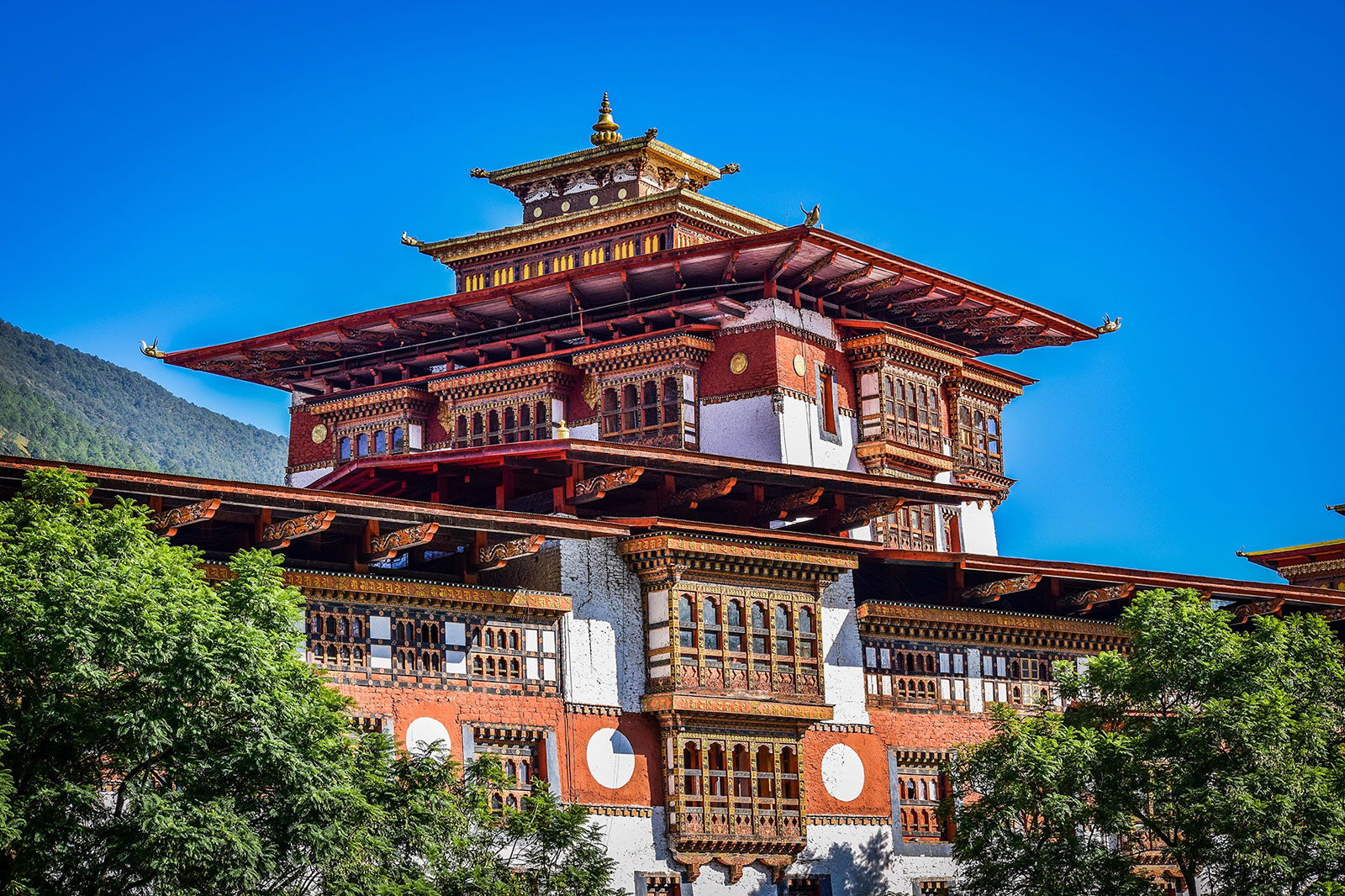The Himalayas are the storehouse of biodiversity, and the flora and fauna of Bhutan associations are sheer majestic. Globally, Bhutan is recognized as a model for conservation and considered as one of the biodiversity “hotspots” of the world. The pristine forests of Bhutan harbours immense diversity of flora and fauna. The country has very high variation in altitudinal gradient from less than 150 m.a.s.l to more than 7500 m.a.s.l within a short span of about 175 kms stretching east-west. Given the wide variation of climate due to altitudinal variation, there is an opportunity to witness different floral and faunal associations within very short distances.
Bhutan can be divided into three major climatic zones:
Alpine Zone (4000m and above) with no forest cover;
Temperate Zone (2000 to 4000m) with conifer or broadleaf forests; and Subtropical Zone (150m to 2000m) with Tropical or Subtropical vegetation.
Types of forest in Bhutan include Fir Forests, Mixed Conifer Forest, Blue Pine Forest, Chir pine Forest, Broadleaf mixed with Conifer, Upland Hardwood Forest, Lowland Hardwood Forest and Tropical Lowland Forests. Bhutan harbors over 60 percent of the common plant species of the Eastern Himalayas.
With more than 72 % of its total land under forest cover, the Government policy and the Constitution commands that at least 60% of its total land area should be maintained under forest cover for all times to come. Large numbers of floral and faunal species are found in unaltered habitat. According to Forestry Department records (2002), the country boasts of more than 166 species of mammals, about 770 species of birds and 7000 species of vascular plants with many endemic to the eastern Himlayas and Bhutan itself. Bhutan has 46 species of Rhododendrons and over 300 types of medicinal plants. Some common species are pine, junipers, magnolias, oak, carnivorous plants, rare orchids, daphne, blue poppy (the national flower), edelweiss, giant rhubarb, gentian, medicinal plants, high-altitude plants and tropical trees.
Bhutan is also home to a wide range of animals. The common animals in the high altitude are tiger, takin, snow leopard, red panda, musk deer, blue sheep and marmot. Tiger, leopard, goral, grey langur, Himalayan black bear, red panda, sambar, wild pig, and barking deer are found in temperate zone. The animals and birds found in the sub tropical forests in the south are tiger, clouded leopard, hog deer, elephants, horn bills, one horned Rhinoceros, swamp deer, water buffalo, golden langur and gaur etc.
Bhutan is considered a favorable birding place as it is at the hub of 221 global endemic bird areas. Over 770 species of birds are found in Bhutan.
In addition, the Bhutan’s forest shelters about 57% of globally threatened birds and 90% of the country’s restricted rare birds. Bhutan has about 415 resident bird species. Depending upon the seasons and weather conditions these birds move up and down the mountains and over 50 species are known to be winter migrants. They include waders, ducks, thrushes, finches birds of prey, and buntings. Summer migrant birds include about 40 species such as warblers, bee-eaters, cuckoos, swifts, flycatchers and drongos. Bhutan also harbors more than 16 species of internationally vulnerable birds. These birds are Blyth’s King Fisher, Ward’s Trogaon, Pallas’s Fish Eagle, White bellied Heron, Satyr Tragopan, Honey Guide, Grey bellied Tragopan, rumped Purple Cochoa, Rufous throated Wren Babbler, Blyth’s Trogon, Rufous necked Hornbill, Red headed Parrot Bill, Wood Snipe, Beautiful Nuthatch, Chestnut breasted Partridge, Dark Rumped Swift and Grey crowned Prinia. Bhutan is also a breeding place for all these birds.
Phobjikha and some other places are the important wintering ground for the rare Black necked crane. Other birds found are Greater spotted Eagle, Imperial Eagle, Hodgson’s Bush chat and Baer’s Pochard.
Organizations involved in environmental activities directly or indirectly are:For the holiday lover we do organize Tour Package for Bhutan birding Tour, Bhutan Botanical Tour and any special Tour on ones own demand.
- National Environmental Commission
- Nature Conservation Division
- Royal Society for Protection of Nature.
- Department of Forests
- Bhutan Trust Fund for Environmental Conservation.
- Donor Organization.
- Association of Bhutan Tour Operators.









